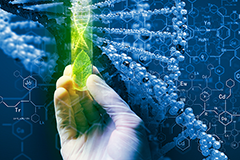
CHEMISTRY, PART 2
Price: $125 | Credits: One Semester | Dept: Science | Course ID# 261-2
This course is designed to be the second semester of Chemistry and includes a laboratory component. The course includes the topics of stoichiometry, the limiting reagent, percent yield, solutions and solubility, acids and bases, gases and gas behavior, chemical equilibrium, nuclear chemistry and organic chemistry. Chemistry is approved by the University of California A-G as a laboratory science (category D).
Laboratory Science
In order to satisfy the University of California A-G requirements for a chemistry course, two components are required. The first is our online course and the second is a wet lab. Our online chemistry course provides the curriculum with videos, quizzes, assignments and final. The lab kit has to be sourced separately—it is not provided by SVHS.
Lab Kit Requirement (Note: this companion kit is not included in this course and needs to be purchased separately)
The kit can be purchased from Quality Science Labs and delivered through the mail. This kit has been designed by SVHS and Quality Science Labs to accompany this course. If you purchased the kit for Chemistry Part 1, you can use that same kit for this Chemistry Part 2–only one kit needs to be purchased for students taking Chemistry Part 1 and Part 2. To receive a discount on the lab kit, enroll in chemistry and use the customer code provided in the course.
Lab Details and Descriptions
Detailed instructions for the live labs are provided in the lab kit. Click here for a summary description of the labs covered in this course.
Credits & Study Hours
Upon completion of this course, the student is awarded 5 credits. Each credit corresponds to 15 hours of study. Of course, some students work more quickly than others, and some can devote more hours to study, so some students are able to complete the course in an accelerated rate.
LEARNING OBJECTIVES
In this module, students gain a comprehension of the following:
- The significance of coefficients in a balanced equation, molar ratios, mole-mole calculations, mass-mass calculations and other stoichiometric calculations.
- To solve Limiting Reactant stoichiometry problems as well as how to determine the excess reactant.
- The difference between actual, theoretical and percent yields with examples of how to calculate theoretical and percent yields.
- The concepts of solutions and solubility. The chemical structure of water, and why water is so important for life.
- How and why water acts as a wonderful solvent and provides a medium for metabolism.
- The various factors that affect how well a solid-liquid solute dissolves, including Particle Size, Temperature, Agitation and the Chemical Nature of the solute, particularly polarity (Like dissolves like.)
- To interpret solubility curves and read solubility curves.
- To identify and understand saturated, unsaturated and supersaturated solutions.
- Colligative properties, freezing point depression and boiling point elevation.
- The relationship between amount of solute and degree of freezing point depression-boiling point elevation.
- The general properties of acids and bases. Including the Arrhenius definitions for acids and bases. Bronsted and Lowry’s theory of acids and bases.
- To distinguish between strong and weak acids and bases in terms of the extent of dissociation, reaction with water and electrical conductivity.
- The pH scale and to consider the effects of acid deposition on limestone buildings and living things.To understand the nature of a strong acid and a strong base. To solve acid-base titration math problems.
- The nature of gases as related to the study of Chemistry.
- The assumptions behind the Kinetic Molecular Theory and some general properties of gases from a molecular perspective. Avogadro’s Law, Boyle’s Law, Lussac’s Law and Charles’ law.
- How the ideal gas equation allows one to find the pressure, volume, temperature and/or number of moles in a certain situation.
- To measure and consider the rate of a reaction.
- The connection between concentration and reaction rate in terms of the Law of Mass Action and Rate Laws.
- The equilibrium constant (K,) and how it can be calculated in various reversible reactions. Le Chatelier’s Principle and how it predicts changes in concentration when “stressing” reactions at equilibrium.
- Nuclear structure and stability, radioactive decay, and nuclear energy. As well as, the biological effects of radiation as well as technology related to energy, medicine, geology, and other areas.
- Organic chemistry – why the element carbon results in such a variety of compounds, how those compounds are classified, and the role of organic compounds in biology and industry.
TOPICS COVERED
This course covers the following topics:
- Quantities in Chemical Reactions
- Solutions and Solubility
- Acids and Bases
- Gases
- Chemical Equilibrium
- Nuclear Chemistry
- Organic Chemistry

